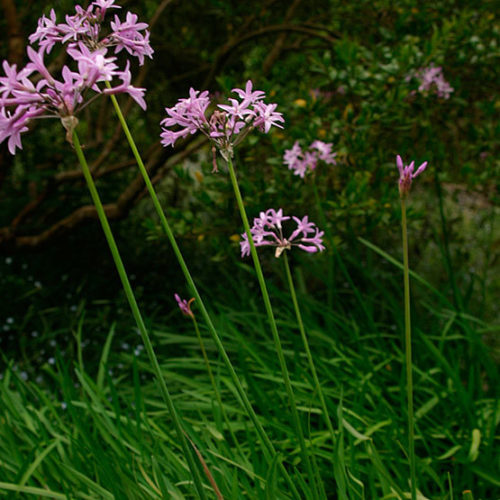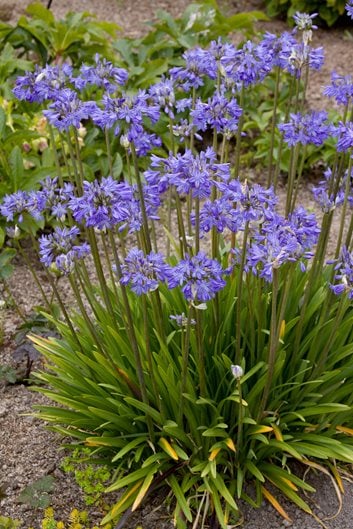Seasonal Agapanthus Treatment: Getting Ready For Wintertime and Summertime
Seasonal Agapanthus Treatment: Getting Ready For Wintertime and Summertime
Blog Article
Releasing the Secret to Successful Agapanthus Farming: Advice for a Flourishing Garden
In the realm of gardening, growing agapanthus efficiently needs a tactical method that encompasses various elements of plant care. With mindful interest to information, one can unlock the keys to supporting these magnificent blooms, bring about a garden that prospers with appeal and vibrancy. By understanding the subtleties of agapanthus farming, one can produce an environment where these plants prosper and bloom generously. In the following discussion, we will explore essential ideas and tricks that will lead you towards a flourishing agapanthus yard, supplying insights right into best techniques, soil conditions, sprinkling methods, and extra.
Planting Agapanthus: Finest Practices
When growing Agapanthus, proper dirt preparation is necessary for ensuring successful growth and growth of these beautiful flowers. Agapanthus, frequently known as Lily of the Nile or African lily, flourishes in well-draining dirt with a somewhat acidic to neutral pH degree - Agapanthus. Prior to planting, it is vital to change heavy clay dirts with raw material such as garden compost or peat moss to boost drainage and supply vital nutrients for the plants
To grow Agapanthus, select a place that gets full sunshine to partial shade, as this will certainly advertise healthy and balanced development and abundant blooming. Dig a hole twice the diameter of the plant's root round and position the Agapanthus at the very same deepness it was formerly expanding. Gently backfill the opening with dirt, weighing down strongly to get rid of any kind of air pockets around the origins.
Water the recently planted Agapanthus completely and continue to keep the dirt equally wet, especially during the plant's active expanding period. Agapanthus. Using a balanced plant food once a month can better sustain the plant's development and flowering. By adhering to these ideal methods for planting Agapanthus, you can develop a stunning display of these captivating flowers in your yard
Ideal Soil Issues for Agapanthus
For optimum development and growing success of Agapanthus plants, making certain the soil problems are excellent is vital. Agapanthus flourishes in well-draining soil with a somewhat acidic to neutral pH degree ranging from 6.0 to 7.0. This kind of dirt permits sufficient water drainage, protecting against waterlogging which can cause root rot. To boost dirt water drainage, take into consideration adding natural matter such as compost or peat moss when preparing the growing site. Additionally, Agapanthus chooses dirt that is rich in nutrients, so incorporating a well balanced plant food throughout the expanding period can advertise healthy development and dynamic blossoms.

Watering and Fertilizing Tips
To make certain healthy and balanced growth and lively flowers, proper watering and feeding methods are vital for successful Agapanthus cultivation. Agapanthus plants profit from routine watering, especially throughout the expanding season.
When it involves feeding Agapanthus, a well balanced plant food with equal components nitrogen, phosphorus, and potassium can be applied in the springtime to promote healthy development and flowering. Slow-release fertilizers are excellent for offering nutrients gradually over a prolonged period. Prevent over-fertilizing, as this can bring about excessive vegetation growth at the expense of blossoms.
Furthermore, including raw material like compost into the dirt can improve nutrient degrees and improve dirt structure, assisting in the total health of the Agapanthus plants. By complying with these watering and fertilizing pointers, gardeners can ensure their Agapanthus plants grow and produce magnificent screens of blossoms.
Pruning and Deadheading Strategies
Proper trimming and deadheading strategies play a vital role in preserving the health and appearances of Agapanthus plants, complementing the important methods of watering and feeding for successful growing. Trimming Agapanthus entails eliminating invested blossom heads, yellowing or dead leaves, and total shaping of the plant to advertise much better development. Deadheading, the procedure of removing faded flowers, not just boosts the plant's appearance but also motivates further blooming.
When deadheading Agapanthus, it is a good idea to trim off the blossom stem at the base making use of sharp, tidy shears. This go to this site process redirects the plant's energy from seed manufacturing back right into origin and foliage growth, promoting a healthier and a lot more durable plant. Regular deadheading can prolong the flowering duration of Agapanthus and stop self-seeding, which can result in congestion.
In regards to trimming, Agapanthus usually gain from a light trim after blooming to clean up the plant and urge fresh development. Reducing the invested flower stems and getting rid of any kind of dead or broken foliage helps keep the plant's vitality and general look. Nonetheless, it is important to avoid cutting right into the crown of the plant, as this can damage its wellness.

Protecting Agapanthus From Vermins and Diseases
Applying effective bug and condition monitoring methods is crucial to securing the wellness and vitality of Agapanthus plants in farming. One common bug that affects Agapanthus is the Agapanthus borer, a caterpillar that tunnels into the plant, creating damages to the fallen leaves and flowers.
Along with parasites, Agapanthus are vulnerable to diseases such as root rot and fungal fallen leave spots. These concerns can frequently be stopped by making sure correct drainage and avoiding overwatering. If signs of illness appear, affected components of the plant should be quickly eliminated to protect against more spread. Fungicides may likewise be used as a treatment step, complying with the maker's directions meticulously. By remaining cautious and resolving parasite and illness problems immediately, gardeners can assist their Agapanthus flourish and grow.

Final Thought
Finally, successful farming of agapanthus requires appropriate planting strategies, ideal soil conditions, adequate watering and fertilizing, routine trimming and deadheading, and security from diseases and bugs. By following these methods and suggestions, gardeners can make certain a flourishing yard loaded with stunning agapanthus blooms. Agapanthus. Remember to keep constant treatment and focus to information to blog here advertise the wellness and longevity of these stunning plants
When growing Agapanthus, correct soil preparation is necessary for guaranteeing effective development and advancement of these stunning flowers.Water the freshly planted Agapanthus completely and proceed to maintain the soil evenly damp, especially during the plant's energetic growing season.For optimal growth and blooming success of Agapanthus plants, ensuring the soil problems are perfect is vital. When transplanting or growing Agapanthus, make sure the dirt is well-prepared to supply the required foundation for the plants to establish themselves effectively. One usual pest that impacts Agapanthus is the Agapanthus borer, a caterpillar that passages into the plant, triggering damage to the fallen leaves and flowers.
Report this page